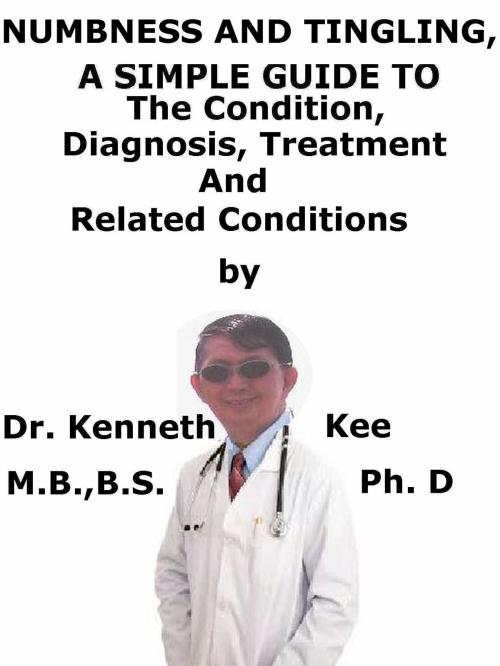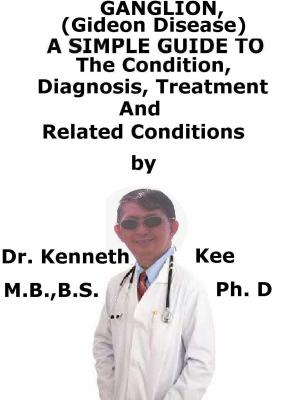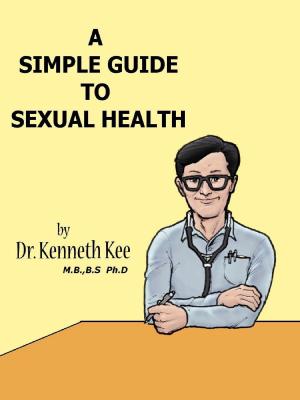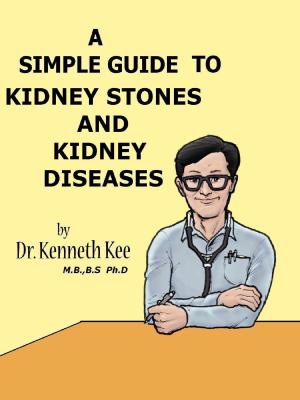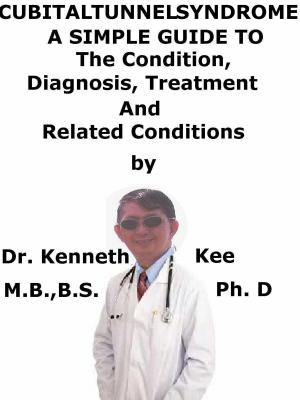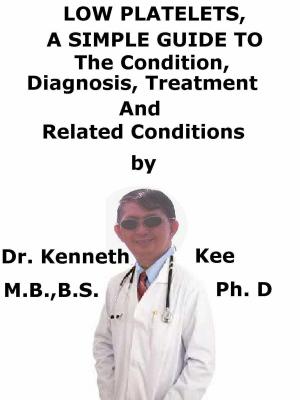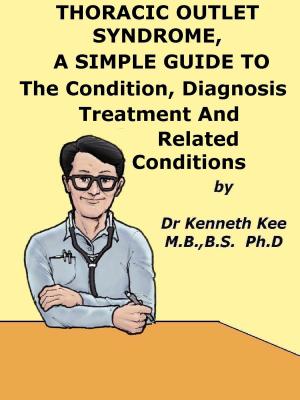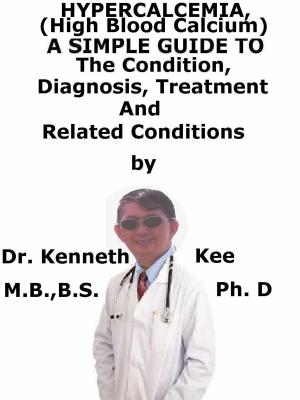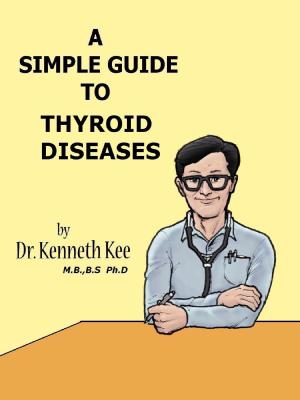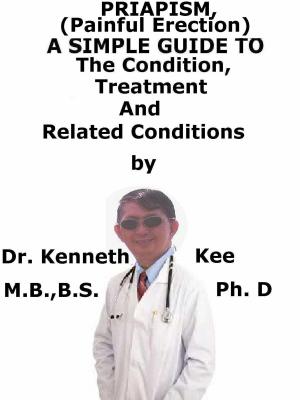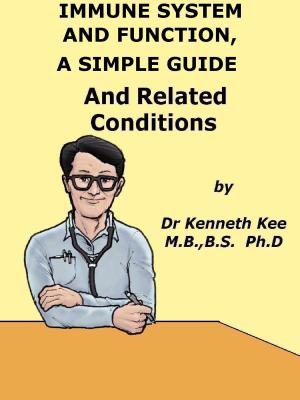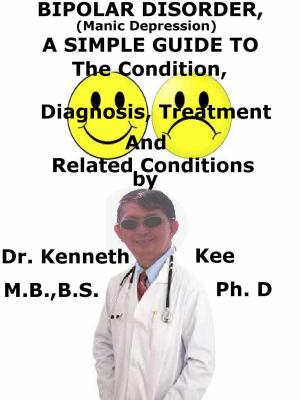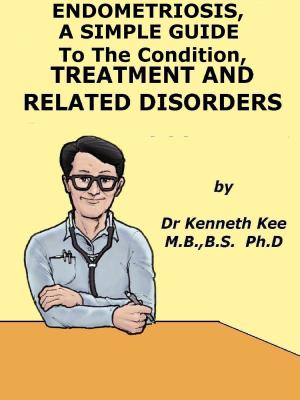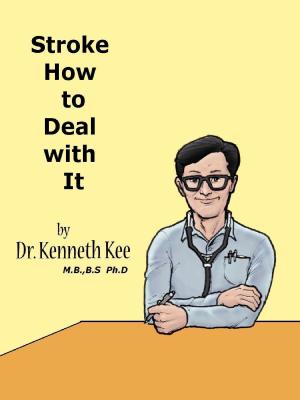Numbness and Tingling, A Simple Guide To The Condition, Diagnosis, Treatment And Related Conditions
Nonfiction, Health & Well Being, Health, Ailments & Diseases, Nervous System & the Brain, Medical, Specialties, Internal Medicine, Neurology| Author: | Kenneth Kee | ISBN: | 9781370162321 |
| Publisher: | Kenneth Kee | Publication: | December 3, 2017 |
| Imprint: | Smashwords Edition | Language: | English |
| Author: | Kenneth Kee |
| ISBN: | 9781370162321 |
| Publisher: | Kenneth Kee |
| Publication: | December 3, 2017 |
| Imprint: | Smashwords Edition |
| Language: | English |
This book describes Numbness and Tingling, Diagnosis and Treatment and Related Diseases
My sister-in-law last week complains of numbness and tingling of both hands and legs.
In spite of treatment by the hospital she did not improve.
She is still being investigated by the hospital’s specialists.
Numbness and tingling are atypical sensations that can happen anywhere in the body, but they are often felt in the fingers, hands, feet, arms, or legs.
Paresthesia is a medical symptom that indicates a burning or prickling sensation in addition to numbness and tingling normally felt in the hands, arms, legs, or feet, but can also happen in other parts of the body.
The numbness and tingling sensation is one which:
1. Happens without warning,
2. Is normally painless
3. Is felt as tingling or numbness,
4. Is felt also as skin crawling, or itching.
A. Transient or temporary Numbness and tingling is one that gives a sensation of "pins and needles" in people at some time in their lives.
It may happen when they have:
1. Sat with legs crossed for too long
2. Fallen asleep with an arm placed under their head.
3. Sustained pressure placed on a nerve.
The feeling quickly goes away once the pressure is relieved.
B. Chronic Numbness and tingling is frequently a medical symptom of an underlying neurological disease or traumatic nerve damage.
Numbness and tingling can be due to disorders affecting the central nervous system such as:
1. Stroke and transient ischemic attacks (mini-strokes),
2. Multiple sclerosis,
3. Transverse myelitis,
4. Encephalitis.
5. A tumor or vascular lesion
6. Nerve entrapment syndromes
Causes:
1. Sitting or standing in the same position for a long time
2. Injuring a nerve
3. Pressure on the nerves
4. Lack of blood supply to an area
5. A lack of vitamin B12
Symptoms:
Numbness and tingling happen when the patient loses normal sensation in an area of the body.
This happens because the pressure cuts off the blood supply to nerves that carry messages about sensation to the brain.
If the patient has numbness, the patient does not feel anything
Diagnosis
A diagnostic assessment of numbness and tingling is based on detection of the underlying disorder that is making the person to sense numbness and tingling feelings.
Diabetic neuropathy, hypo-calcemia, vitamin deficiencies, drug toxicity, and minor infections such as herpes zoster or Herpes Simplex Virus can normally be diagnosed medically or with laboratory tests.
All other peripheral neuropathies require EMG with nerve conduction studies to confirm and characterize the neuropathy
1. Complete Blood Count
2. Chemistry panel or metabolic panel
3. Urinalysis
4. Thyroid Stimulating Hormone (TSH)
5. Erythrocyte Sedimentation Rate (ESR)
Other Studies are:
1. Serum Folate
2. Vitamin B12
3. Syphilis Serology (VDRL)
4. Antinuclear Antibody (ANA)
5. Nerve conduction velocities
6. Electromyogram (EMG) and nerve conduction studies
7. Lumbar puncture (spinal tap) to rule out central nervous system disorders
8. Cold stimulation test done to check for Raynaud phenomenon
Imaging Studies:
1. X-Ray of affected limb
2. Angiogram (a test that uses x-rays and a special dye to see inside the blood vessels)
3. CT angiogram
4. CT scan of the head
Tissue and Immunological Studies:
1. Nerve biopsy
2. Muscle biopsy
3. Serum immunoelectrophoresis
Treatment:
Treatment will depend on the likely cause of the numbness and tingling.
Certain exercises for carpal tunnel syndrome or low back pain
Vitamin supplements
Anti-inflammatory medicines for pain
Antidepressant medications
Wear clothes and shoes that are loose-fitting
Stretching or massaging the affected limb can decrease the tingling
TABLE OF CONTENT
Introduction
Chapter 1 Numbness and Tingling
Chapter 2 Cause
Chapter 3 Symptoms
Chapter 4 Diagnosis
Chapter 5 Treatment
Chapter 6 Prognosis
Chapter 7 Peripheral Neuropathy
Chapter 8 Diabetes Neuropathy
Epilogue
This book describes Numbness and Tingling, Diagnosis and Treatment and Related Diseases
My sister-in-law last week complains of numbness and tingling of both hands and legs.
In spite of treatment by the hospital she did not improve.
She is still being investigated by the hospital’s specialists.
Numbness and tingling are atypical sensations that can happen anywhere in the body, but they are often felt in the fingers, hands, feet, arms, or legs.
Paresthesia is a medical symptom that indicates a burning or prickling sensation in addition to numbness and tingling normally felt in the hands, arms, legs, or feet, but can also happen in other parts of the body.
The numbness and tingling sensation is one which:
1. Happens without warning,
2. Is normally painless
3. Is felt as tingling or numbness,
4. Is felt also as skin crawling, or itching.
A. Transient or temporary Numbness and tingling is one that gives a sensation of "pins and needles" in people at some time in their lives.
It may happen when they have:
1. Sat with legs crossed for too long
2. Fallen asleep with an arm placed under their head.
3. Sustained pressure placed on a nerve.
The feeling quickly goes away once the pressure is relieved.
B. Chronic Numbness and tingling is frequently a medical symptom of an underlying neurological disease or traumatic nerve damage.
Numbness and tingling can be due to disorders affecting the central nervous system such as:
1. Stroke and transient ischemic attacks (mini-strokes),
2. Multiple sclerosis,
3. Transverse myelitis,
4. Encephalitis.
5. A tumor or vascular lesion
6. Nerve entrapment syndromes
Causes:
1. Sitting or standing in the same position for a long time
2. Injuring a nerve
3. Pressure on the nerves
4. Lack of blood supply to an area
5. A lack of vitamin B12
Symptoms:
Numbness and tingling happen when the patient loses normal sensation in an area of the body.
This happens because the pressure cuts off the blood supply to nerves that carry messages about sensation to the brain.
If the patient has numbness, the patient does not feel anything
Diagnosis
A diagnostic assessment of numbness and tingling is based on detection of the underlying disorder that is making the person to sense numbness and tingling feelings.
Diabetic neuropathy, hypo-calcemia, vitamin deficiencies, drug toxicity, and minor infections such as herpes zoster or Herpes Simplex Virus can normally be diagnosed medically or with laboratory tests.
All other peripheral neuropathies require EMG with nerve conduction studies to confirm and characterize the neuropathy
1. Complete Blood Count
2. Chemistry panel or metabolic panel
3. Urinalysis
4. Thyroid Stimulating Hormone (TSH)
5. Erythrocyte Sedimentation Rate (ESR)
Other Studies are:
1. Serum Folate
2. Vitamin B12
3. Syphilis Serology (VDRL)
4. Antinuclear Antibody (ANA)
5. Nerve conduction velocities
6. Electromyogram (EMG) and nerve conduction studies
7. Lumbar puncture (spinal tap) to rule out central nervous system disorders
8. Cold stimulation test done to check for Raynaud phenomenon
Imaging Studies:
1. X-Ray of affected limb
2. Angiogram (a test that uses x-rays and a special dye to see inside the blood vessels)
3. CT angiogram
4. CT scan of the head
Tissue and Immunological Studies:
1. Nerve biopsy
2. Muscle biopsy
3. Serum immunoelectrophoresis
Treatment:
Treatment will depend on the likely cause of the numbness and tingling.
Certain exercises for carpal tunnel syndrome or low back pain
Vitamin supplements
Anti-inflammatory medicines for pain
Antidepressant medications
Wear clothes and shoes that are loose-fitting
Stretching or massaging the affected limb can decrease the tingling
TABLE OF CONTENT
Introduction
Chapter 1 Numbness and Tingling
Chapter 2 Cause
Chapter 3 Symptoms
Chapter 4 Diagnosis
Chapter 5 Treatment
Chapter 6 Prognosis
Chapter 7 Peripheral Neuropathy
Chapter 8 Diabetes Neuropathy
Epilogue
